New games with Old Masters
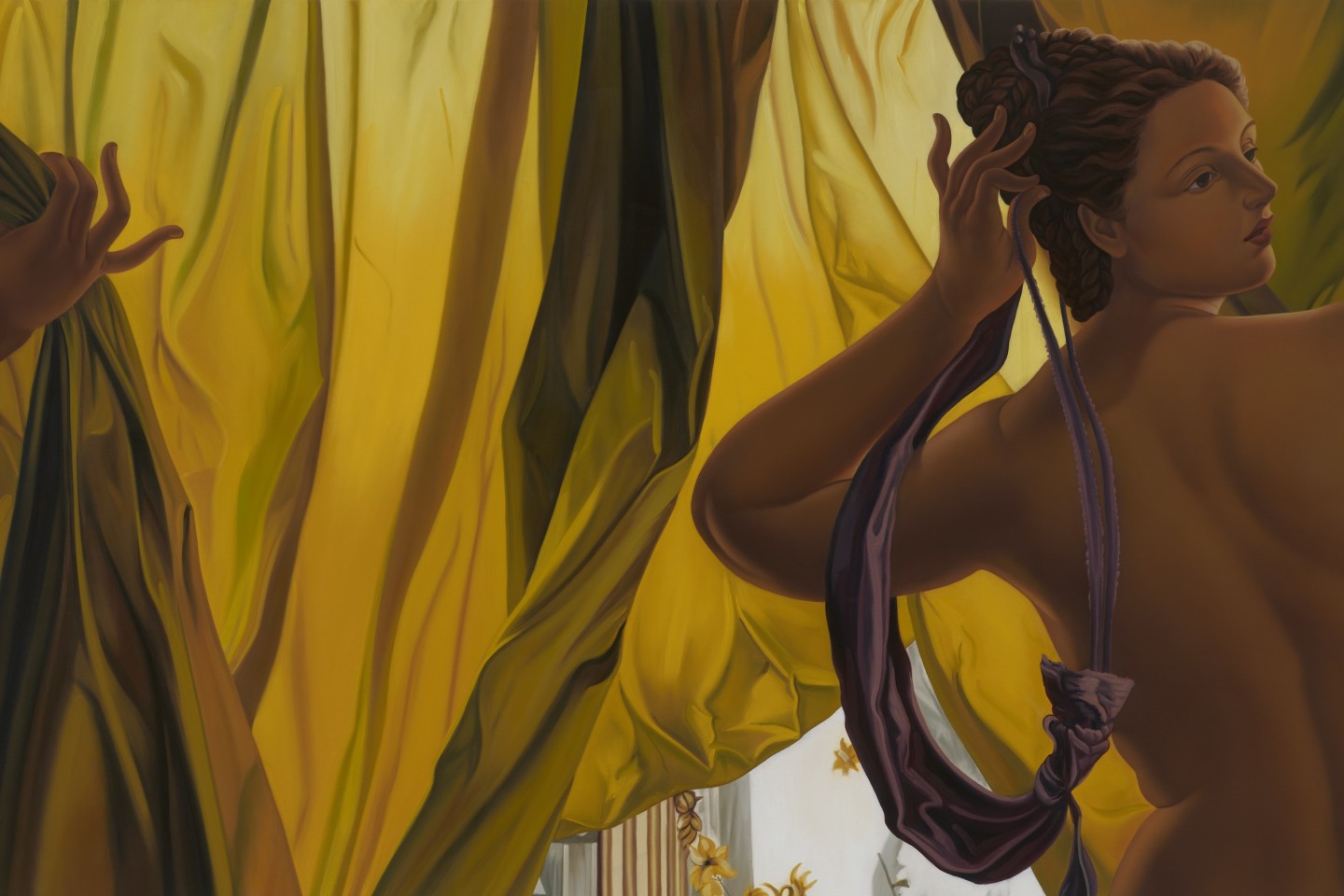
Roula Khalaf, Editor of the FT, selects her favourite stories in this weekly newsletter.
Is that an 18th-century portrait by Johann Heinrich Tischbein the Elder on display at contemporary art gallery Gagosian? Or a 17th-century work by Italian baroque artist Orazio Gentileschi at New York’s James Cohan? Seems like it, but no. In recent months, a clutch of cutting-edge galleries have been diving into historic portraiture, but via artists who are flipping the script of the original images.
At Gagosian, the painting is by Polish painter Ewa Juszkiewicz, who deftly recreates specific European portraits from the Renaissance to the 19th century, but with a significant twist. The sitters’ faces are obscured with elaborate hairstyles, swaths of fabric or flamboyant floral arrangements. The process is part homage to the “extremely attractive and alluring” nature of the period; but also part critique, says Juszkiewicz: “The stereotypes present in these paintings made me feel the need to break the existing canon and build my own, alternative story.”
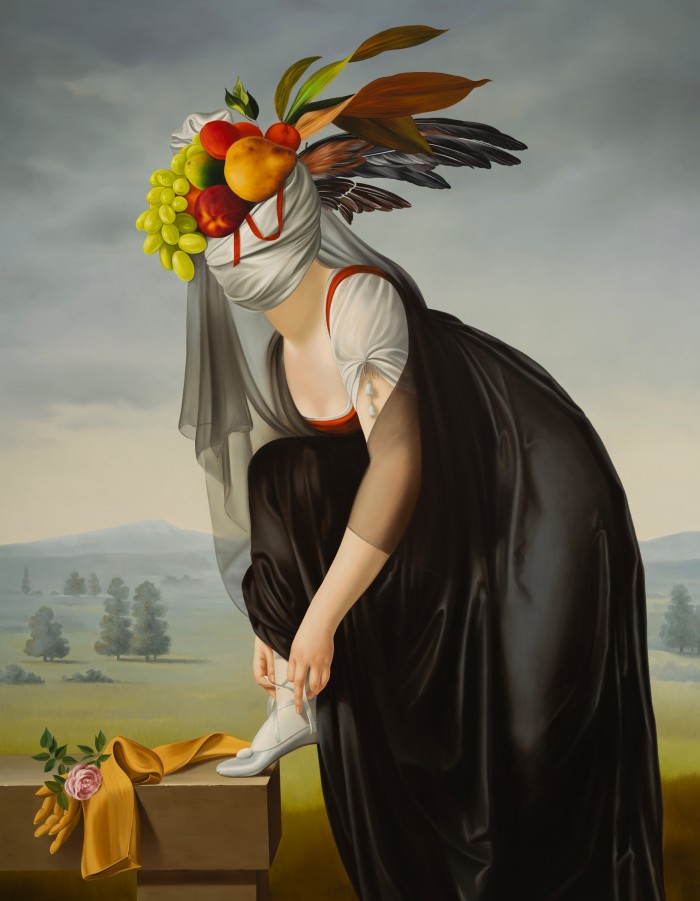
The results are wooing collectors. At Phillips in 2021, Juszkiewicz’s fungi-headed Girl in Blue (2013) sold for $730,800 (over an $80,000-$120,000 estimate); at a Christie’s charity auction in New York a year later, the elegantly altered Portrait of a Lady (After Louis Leopold Boilly) soared to $1.56mn. In the past few months, she has launched a collaboration with Louis Vuitton – a bag version of her 2021 painting Ginger Locks, part of the house’s Artycapucines collection – and opened a solo show of new work at Gagosian’s LA space.
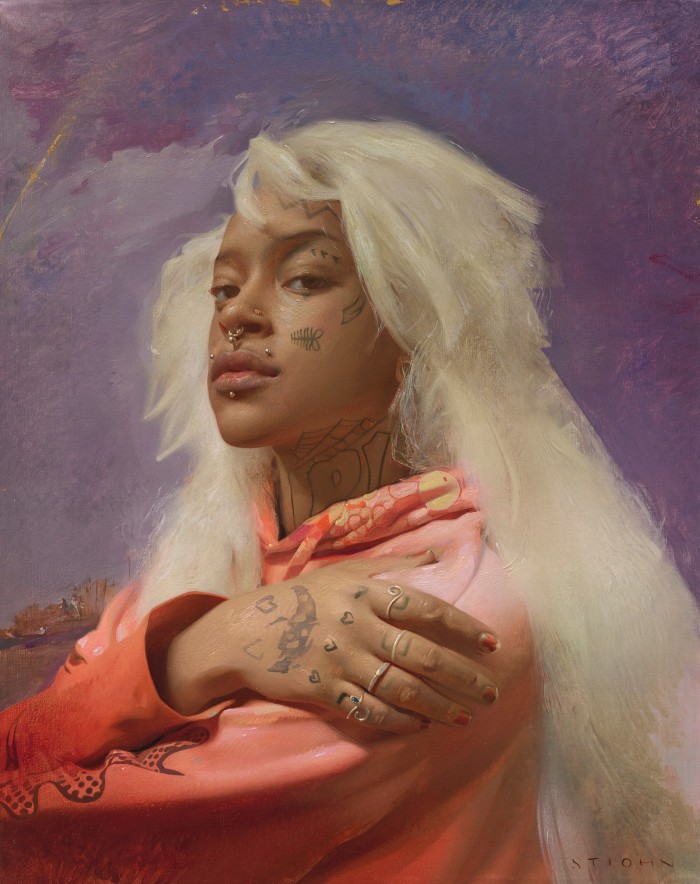
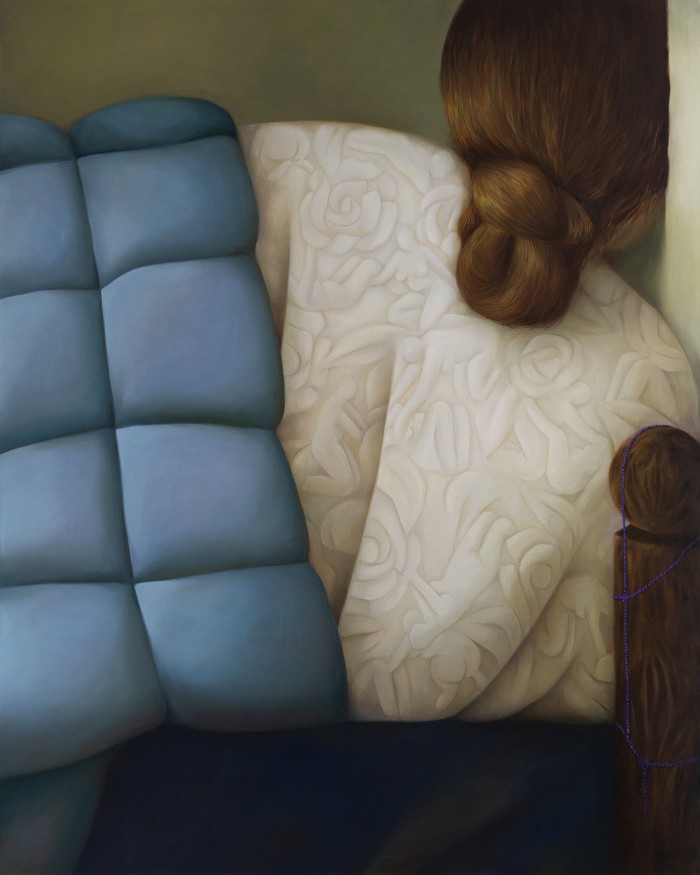
A number of other artists are riffing upon renaissance, romantic and rococo portraiture. New York-based Will St John, whose work was recently shown in London by Saatchi Yates, paints “Brooklyn bohemians” – from drag queens to trans models – in the formal style of Italian classical realism. In London, Chinese artist Xu Yang brings her own drag performances to the canvas with rococo opulence. French artist Diane Dal-pra strips back traditional motifs into almost abstract form, where a chignon of hair and planes of fabric allude to the figure. And Ayana V Jackson uses photography to build “historical allusions” of African and African-American identities.
James Cohan recently showed the work of Jesse Mockrin and refers to it as a “reframing of art history”. A 2014 series by the Los Angeles-based artist in 2014 depicted K-pop stars in the manner that the Old Masters painted dandyish young boys. “Looking at androgyny and the disruption of codified gender norms is a through line in all of my work,” says Mockrin, of a theme she more recently explored in a portrait of Billie Eilish – a work that spliced Caravaggio’s Boy with a Basket of Fruit (c1595) with the singer’s two-tone hair and long green acrylic nails.
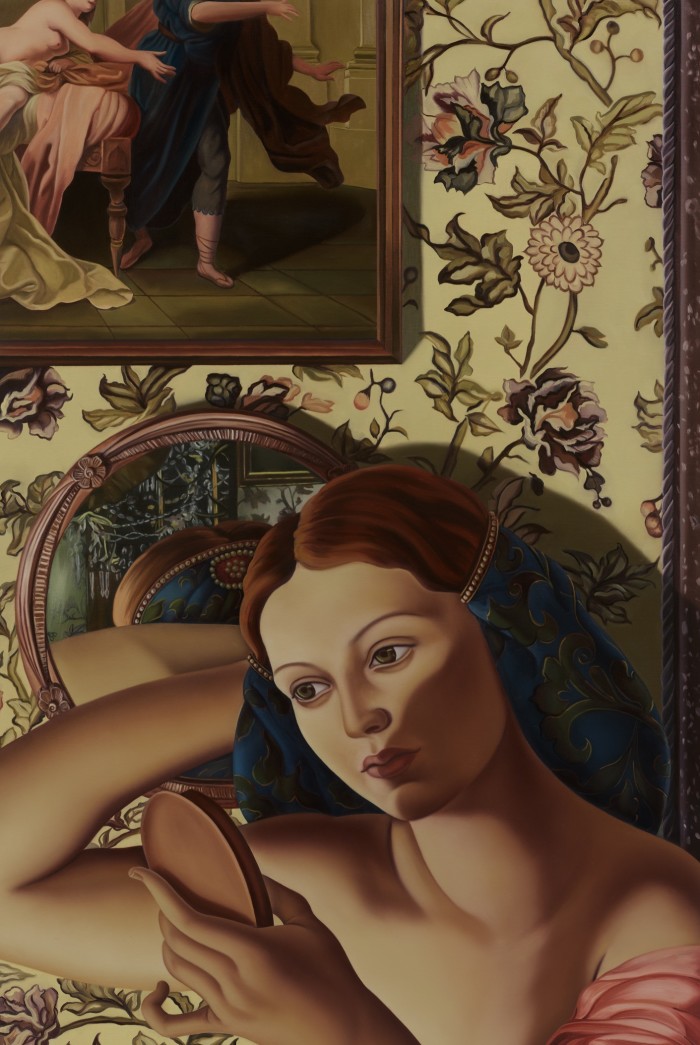
“In looking back to the Old Masters, Jesse holds up a mirror to reflect our current times, exposing the ways in which the biblical and mythological stories of her source material remain relevant,” says Cohan. The works in her newest series, The Venus Effect, recast paintings of women in front of a mirror through a feminist lens – from Giovanni Bellini’s Young Woman at her Toilette (1515) to Gustave Courbet’s Jo, the Beautiful Irishwoman (1865-66). “Most of these paintings were originally made by men and show an obsession with women’s vanity, lust and rampant sexuality – and how it caused so many problems,” says Mockrin.
“Historically, and today, the function of women is often reduced to objects to be watched, and the social pressure on women’s appearance can be difficult to bear,” adds Juszkiewicz. But she has not limited her critique to works by men. The Letter (after Adélaïde Labille-Guiard) is a reworking of a 1787 painting by the first woman artist to set up a studio at the Louvre. The substantial folds of the subject’s dress are “expanded to the point of absurdity”, the head a bundle of fabric knots and twists, “creating a strange figure on the border between what is human and inhuman”.
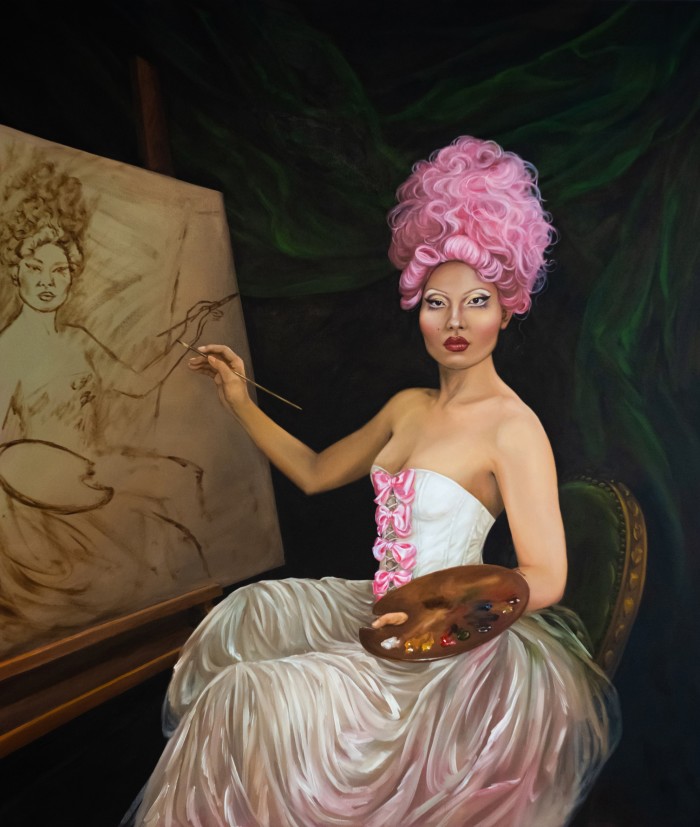
And while Xu’s historical references include Caravaggio, Rembrandt and Velázquez, she also draws upon their less-celebrated female counterparts, from Italian baroque painter Artemisia Gentileschi to Swiss neoclassical painter Angelica Kauffman. The latter’s Portrait of a Lady was the inspiration for Xu’s Tate Collective commission: Perhaps We are All Fictions in the Eye of the Beholder, a painting in which Xu is shown as both model and artist in lashings of pink tulle and dramatic make-up.
“I became completely obsessed with historical portraits,” says 27-year-old Xu, who grew up in rural north-east China and was classically trained in painting before moving to London, where she is now represented by Berntson Bhattacharjee gallery. “But here I discovered my own sexuality: being queer, being pansexual. Drag is a way for me to express my own identity; it’s liberating. This is a Generation Z queer Asian woman confronting the viewer. It subverts the male gaze as well as gender stereotypes and the social norm.”
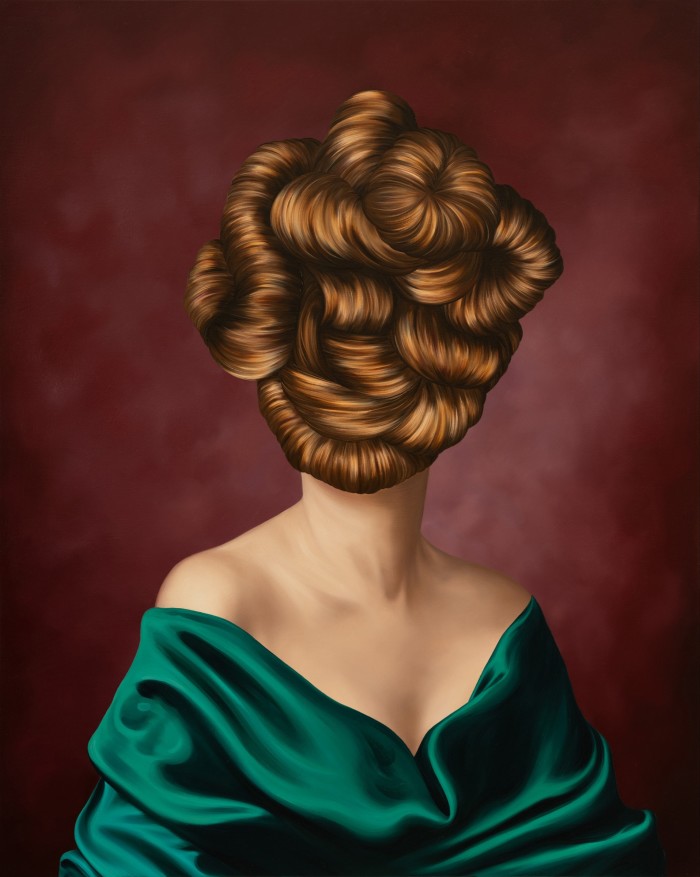
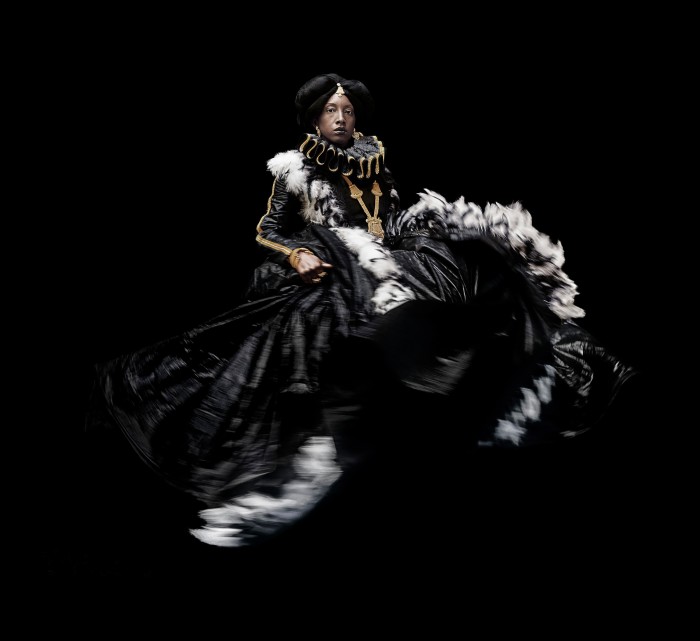
Like Xu, Ayana V Jackson is her own subject; she uses her body to question the history of photography. Earlier this year, her work was the subject of a major exhibition at Smithsonian National Museum of African Art in Washington, and is currently on show at Mariane Ibrahim’s Mexico City gallery. Working between New York, Paris and Johannesburg, Jackson deconstructs 19th-century daguerreotypes and early-20th-century portraits to construct her own cast of characters – “people I would have wanted to meet, like Sara Forbes Bonetta [the orphaned west African princess who was a goddaughter of Queen Victoria].” In her Take Me to the Water series, she looked to paintings by the likes of Rembrandt but also to the Portrait de Madeleine (1800) by French Marie-Guillemine Benoist. “It was scandalous at the time that a black woman had been painted with such precision and beauty,” says Jackson. “I decided to use the same lighting, to normalise a black woman being presented in the [elevated] style of the Masters.”
For all these artists, there’s an evident delight in texture, colour and technique. Juszkiewicz uses only traditional oil‑painting, working with multiple glazes. Xu likens the process of layering pigments on the gessoed linen canvas to painting her own face, or producing a “painted version of an Instagram filter”. “Yang has amazing technical and colour knowledge,” says artist Victoria Cantons, Xu’s partner, with whom she also shares a studio. And for Dal-pra, who is particularly influenced by the Italian Mannerist style: “I like to challenge myself technically with the paintings”. But, she adds: “I’m interested in creating an atmosphere – a bit like when you try to explain a dream to someone.”
Comments